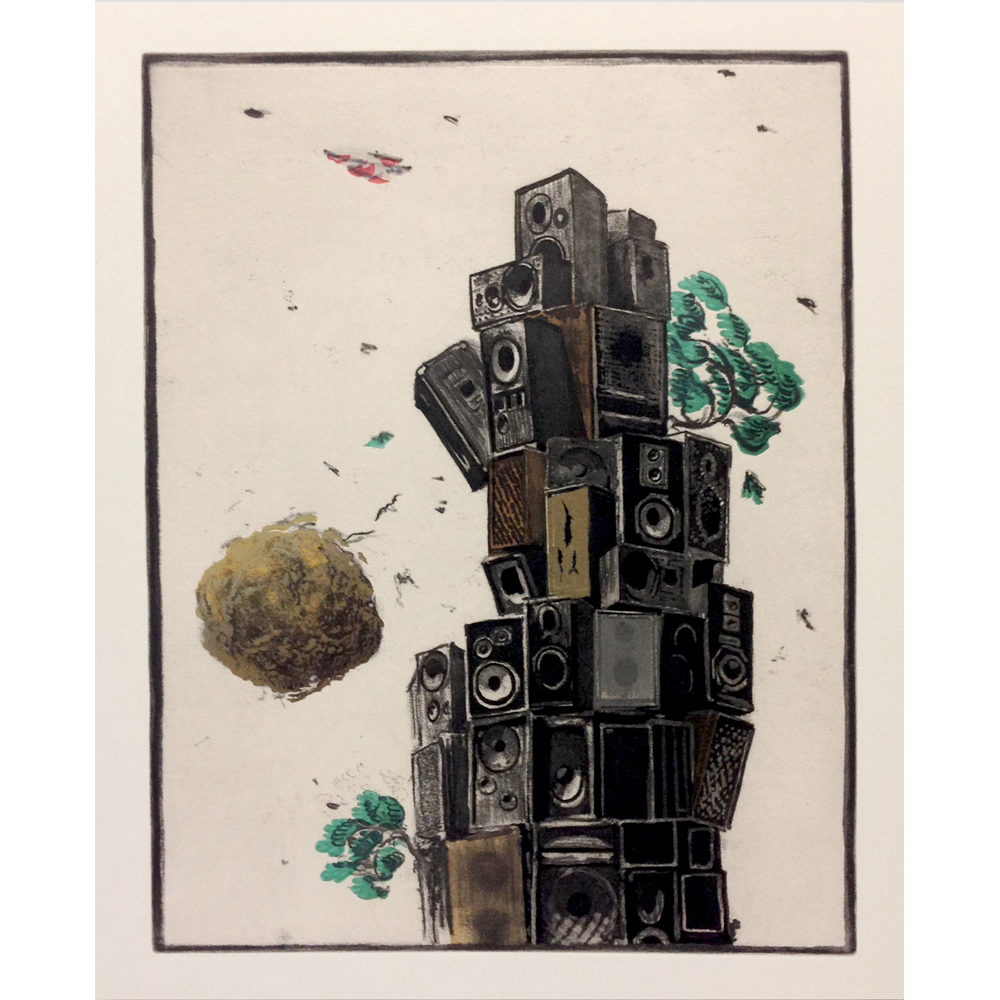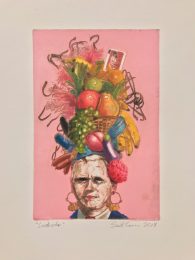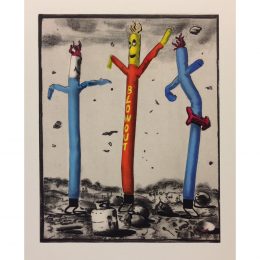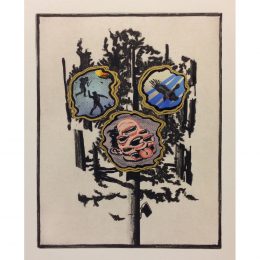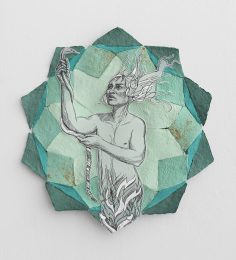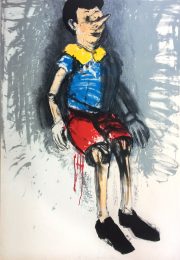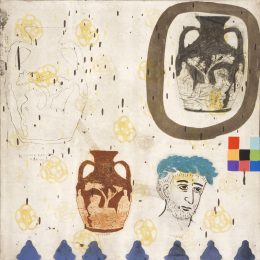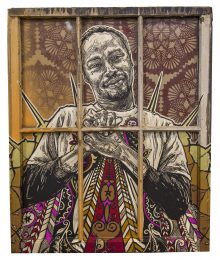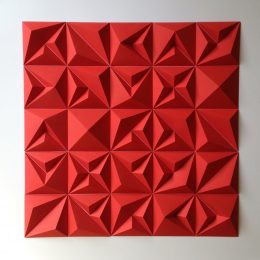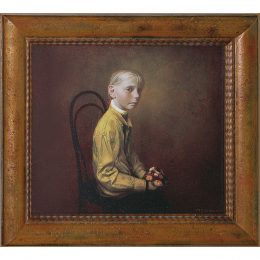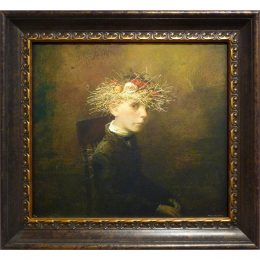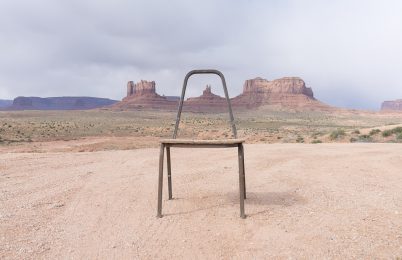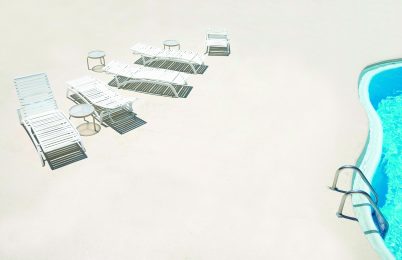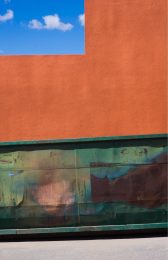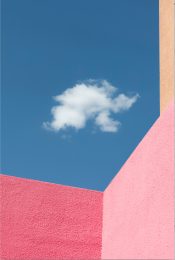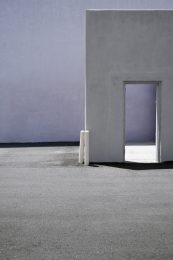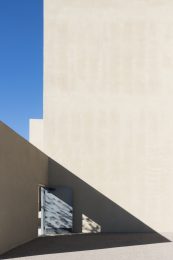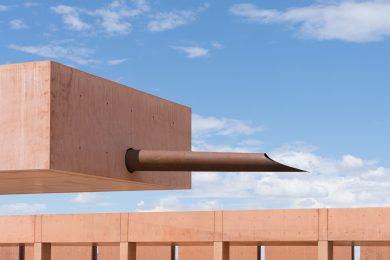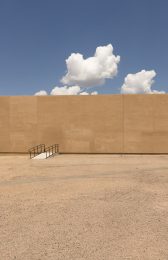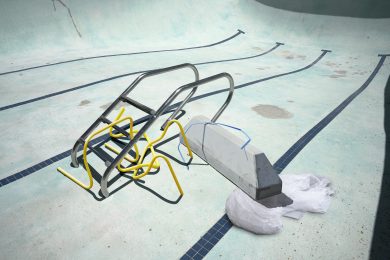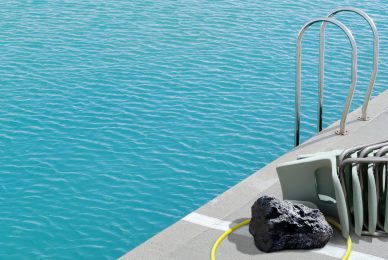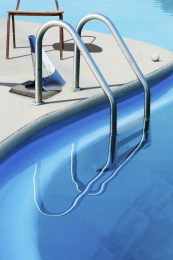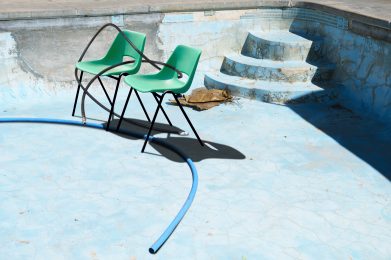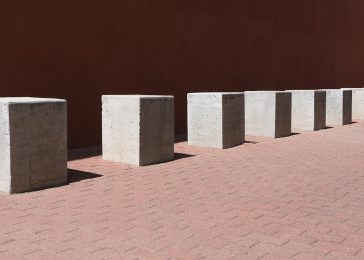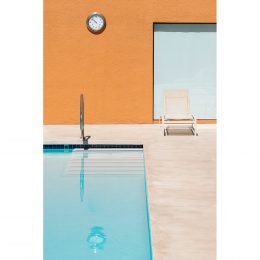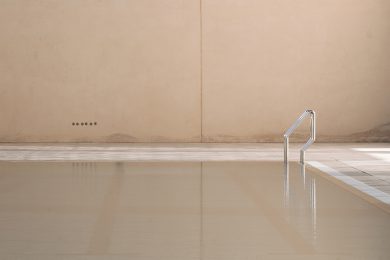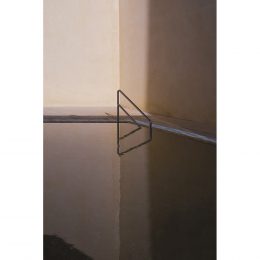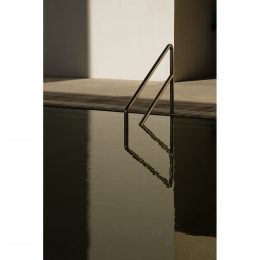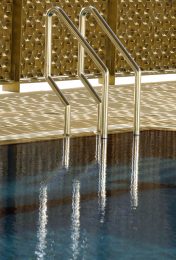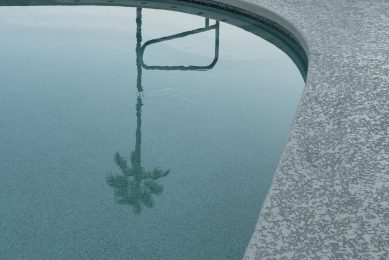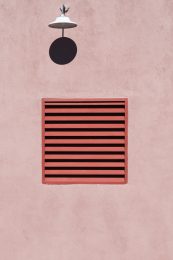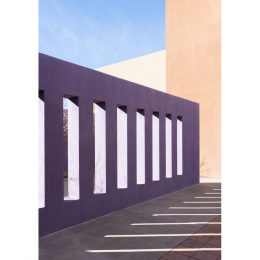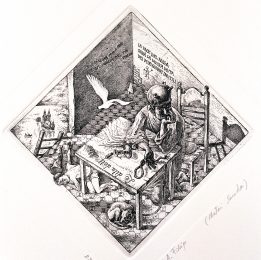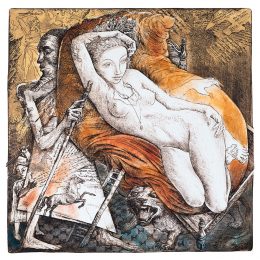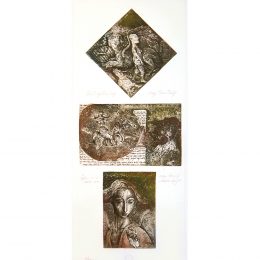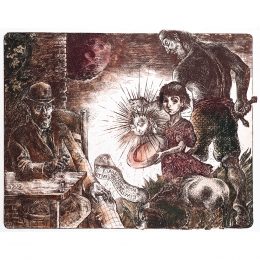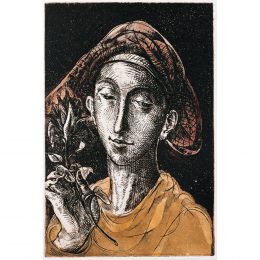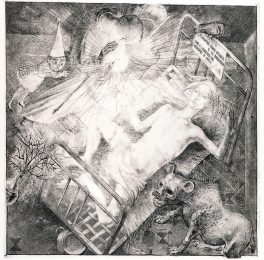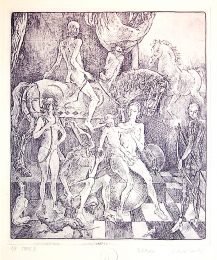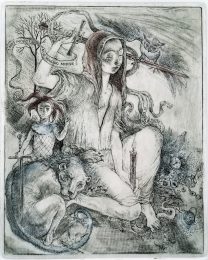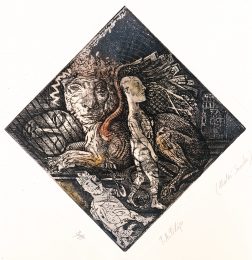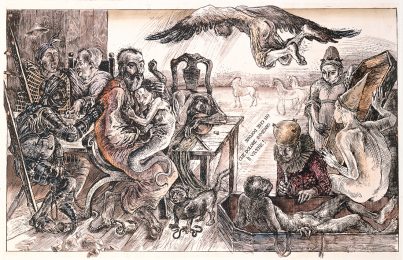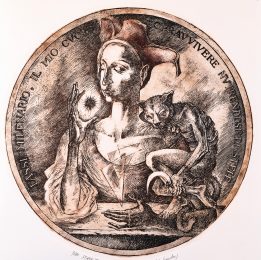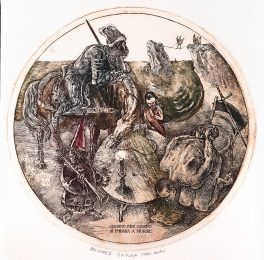Details — Click to read
Scott Greene’s etching/reductive linocut work, Cabinets of Wonder, shows a towering stack of stereo systems, rendered in a way reminiscent of traditional Japanese landscape prints. Greene suggests a process of contemporary replacement—where the reaches of technological development have gone so far as to erode nature’s sanctity. Greene juxtaposes the natural with the manmade in a way that encourages viewers to understand that time is merely a construct, thereby deconstructing the audience’s perceptions of nature and human invention as interminable.
Scott Greene’s work is not associated with a definitive time period, but instead, works to integrate art historical and classical elements into a more contemporary approach. Greene’s work functions as a form of socio-political commentary and “uses the composition of a historical work as a matrix for making a painting that humorously examines the relationship between politics, nature and culture”. Greene draws on themes such as beauty, popular culture, and the natural environment in an additive artistic process that emphasizes the visual and temporal effects of building rather than executing a work in a single instance. After studying in California and receiving his BFA in painting from the San Francisco Art Institute, Greene moved to New Mexico, where he received his MFA in painting and has since lived for almost 30 years. Greene’s work derives much of its influence from this matrix; where he describes that, “the expansive space, vivid light and western frame of reference informs the narrative content in my work, and the alien beauty of high desert skies serve as backdrops for many compositions”. Greene also touches on the complex interplay between beauty and environmental exploitation within his oeuvre—an issue he sees as being both pertinent to and prevalent within New Mexico, today.

